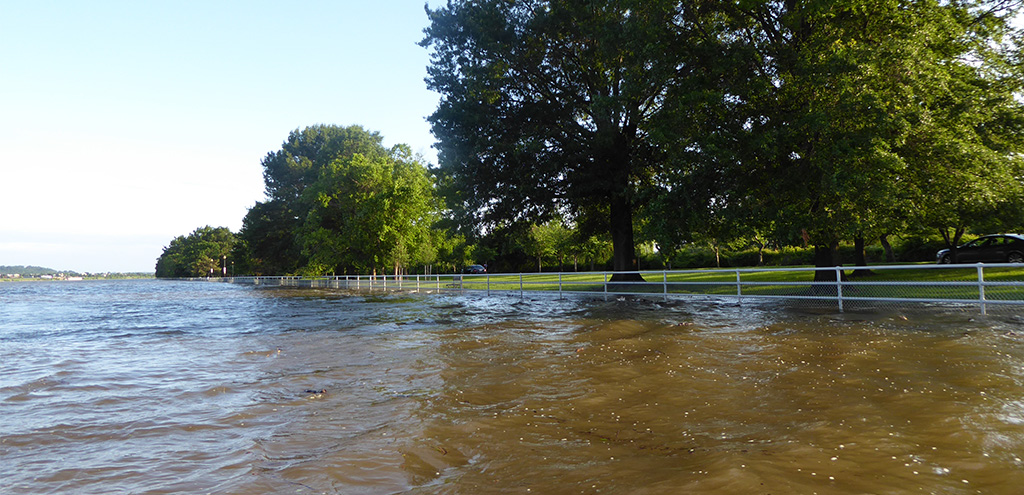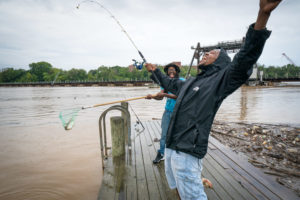THE LEAFLET

A Year of (Literal and Figurative) Ups and Downs for Our Waterways

The Conowingo Dam with its floodgates open. Heavy rain forced officials to open more than 20 floodgates, sending garbage and other debris flowing into the Chesapeake Bay. Courtesy Maryland Department of Natural Resources.
Every other year, the Chesapeake Bay Foundation releases a State of the Bay. Similar to our annual efforts with the Tree Report Card, this report is a comprehensive measure of the Bay’s health based on 13 indicators in three categories: pollution, habitat, and fisheries. The report finds the bay “dangerously out of balance,” giving it a D+ grade, down from a C- in the last report, in 2016. Most health indicators dropped or remained the same. The three biggest slides were in nitrogen and phosphorus pollution and water clarity, each of which received an F. The drop was largely due to increased pollution from roadways, farms, and humans and poor water clarity caused by record regional rainfall.
Still, there are heartening signs that the Bay is building resiliency. Bay grasses remain intact and recent studies indicate an improving trend in underwater dead zones over the long term. But the system remains dangerously out of balance. And new challenges like climate change and increasingly lax environmental protections are threatening success.

Fishing at Anacostia Park. Courtesy of Krista Schlyer and WAMU.
Closer to home, this past year was the very first year the Anacostia River posted a passing grade on the Anacostia Watershed Society’s State of the River Report Card. The grade — a 63, or D — is an accomplishment for a river that has failed every annual check for 10 years. Much like the Bay, booming aquatic vegetation is cause for celebration whereas water clarity and levels of toxins and trash are still much too high.
Both of these rivers suffer mightily from stormwater runoff or rainfall that flows over the ground surface. Stormwater runoff is a major issue because water flowing from impervious surfaces (e.g., roads, parking lots, driveways, roofs) brings numerous pollutants to streams and generates torrential stream flow, which causes streambank erosion and makes the water cloudy and inundates the river with sediment. The runoff also carries fecal matter, trash, and other pollutants to the river, the effects of which can clearly be seen in the Anacostia River and the Chesapeake Bay.
While we cannot directly control the record amount of rainfall, we can impact the amount of stormwater runoff heading into our local waterways. Enter one of the most comprehensive green infrastructure solutions: trees! Trees, along with permeable pavement, green roofs, and rain gardens, reduce the stormwater runoff that flows into sewer systems and triggers sewage overflows. All these practices reduce the growing amount of impervious surfaces in cities and help capture rainwater where it falls, filtering out pollutants and reducing large volumes of runoff.

A rain garden in NoMa doing its job -collecting and absorbing stormwater. Courtesy of DOEE.
Plus, green infrastructure like trees also decrease pollutants rushing into waters, improve air quality and alleviate urban heat island effect to lower heat stress related fatalities. Not to mention they can mitigate localized flooding.
Want to learn more or do something to help mitigate stormwater? Plant a tree! There is a city-wide program, RiverSmart Homes, where you can have a tree professionally planted in your yard for free. Then you can sit back, relax, and watch it absorb stormwater knowing you’re helping your yard, city, watershed, and planet.